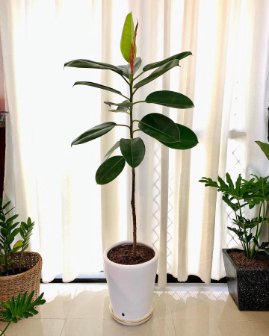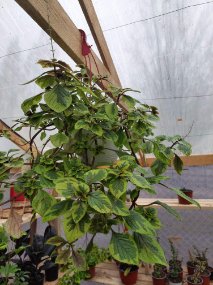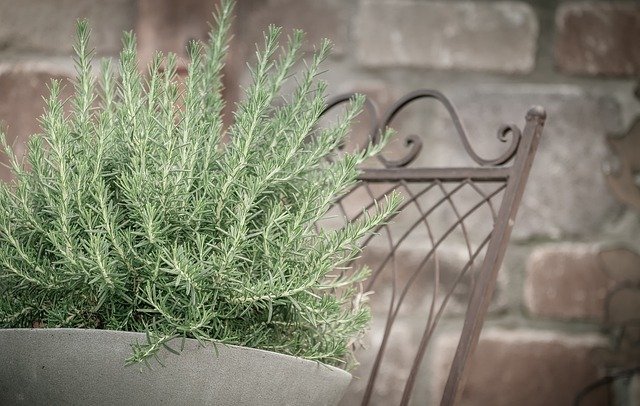Last updated on October 28th, 2022 at 07:46 am
Do you have a green thumb but lack the space to garden outdoors? Or maybe you live in an apartment and don’t have access to a backyard. No problem! There are plenty of tall plants with shallow root systems that can be grown indoors.
But you should understand that plants with shallow roots are not meant to be grown too tall. In a simple explanation, tall plants or trees will need strong and deep roots to survive. The taller the plant, the deeper and wider the roots need to be. A tall plant with a shallow root system is not as stable as a tall plant with a deep root system.
So the “tall” plants that we will discuss today are those with significantly grow higher than most potting plants. But once again you can’t expect them to grow 3 meters high or even more, it just doesn’t gonna happen.
Table of Contents
Best tall plants with shallow root systems for indoor gardening:
– Dracaena Marginata (Madagascar Dragon Tree)
Dracaena Marginata, also known as the Madagascar Dragon Tree, is a tall plant that is often used as an indoor houseplant. It can grow up to 15 feet tall, but its shallow root system means that it does not require a large pot.

The roots of the Dracaena Marginata are typically very shallow, only growing a few inches deep. However, the roots of the Dracaena Marginata are very strong and can easily break through the bottom of a pot if they are not well-trimmed.
When growing Dracaena Marginata indoors, it is important to keep the roots trimmed and to regularly fertilize the plant. Additionally, the Dracaena Marginata prefers bright, indirect light and should be kept out of direct sunlight. With proper care, the Dracaena Marginata can make a beautiful addition to any home.
– Ficus elastica (Rubber Plant)
Ficus elastica, also known as the Rubber Plant, is a tall tropical plant that can grow up to 50 feet tall in its native habitat. In captivity, however, it is typically much smaller, only reaching a few feet in height.

The Rubber Plant has a shallow root system that does not grow very deep, making it an ideal plant for indoor cultivation. If you are growing your Rubber Plant in a pot, be sure to choose a pot that is large enough to accommodate the plant’s eventual size.
The Rubber Plant prefers bright but indirect light and moist soil. Allow the top inch or so of soil to dry out before watering again. If the leaves of your Rubber Plant begin to turn yellow, this is a sign that it is getting too much direct light and should be moved to a shadier spot.
– Schefflera actinophylla (Umbrella Tree)
The Umbrella Tree, also known as Schefflera actinophylla, is a tall plant that originates from Australia. It gets its name from its large, umbrella-like leaves that can grow up to two feet in length.

While it is typically found outdoors in tropical climates, it can also be grown indoors with the proper care. When growing Umbrella Trees indoors, it is important to provide them with bright, filtered light and consistent moisture. They prefer warm temperatures and do not tolerate cold drafts or excessive heat.
With proper care, they can grow to be six to eight feet tall. However, their root system is shallow and does not extend deep into the ground. This makes them susceptible to toppling over in strong winds or heavy rains. As such, they should be planted in a pot that is large enough to support their size and weight.
– Philodendron bipinnatifidum (Lacy Tree Philodendron)
Philodendron bipinnatifidum, also known as the Lacy Tree Philodendron, is a tall plant that can grow up to 10 – 15 feet tall indoors. It has a shallow root system that doesn’t grow very deep, making it an ideal plant for growing indoors.

The roots of the Lacy Tree Philodendron are white and spongy, and they prefer to grow in moist, well-drained soil. When watering your philodendron, be sure to avoid getting the leaves wet, as this can cause them to rot.
The best way to water your philodendron is to soak the soil thoroughly and then allow it to drain. Be sure to fertilize your philodendron regularly, as it is a heavy feeder. Philodendrons are tough plants and can tolerate a wide range of conditions, but they prefer bright, indirect light.
If you’re looking for a tall, easy-to-care-for plant for your home or office, the Lacy Tree Philodendron is an excellent choice!
– Plectranthus Scutellarioides (Copperleaf)
Plectranthus Scutellarioides, or copperleaf, is a tall plant with shallow roots that is native to the tropical regions of Africa. It can grow up to 3 feet tall and has dark green leaves that are copper-colored on the undersides.

Copperleaf is typically grown as an ornamental plant, but it can also be used for culinary purposes. The leaves can be used in salads or as a garnish, and the flowers are edible and have a sweet flavor.
Copperleaf can be grown indoors or outdoors, but it prefers full sun and well-drained soil. If you live in a colder climate, it is best to grow copperleaf as a houseplant. When potting copperleaf, use a container that is at least 12 inches deep. The roots of this plant are shallow, so it does not need a lot of space to spread out.
Water copperleaf regularly, allowing the soil to dry out somewhat between watering. This plant is not tolerant of drought conditions. Fertilize copperleaf once or twice a year with a balanced fertilizer. Plants that are grown indoors will need less fertilizer than those that are grown outdoors.
Prune copperleaf regularly to encourage new growth and prevent the plant from getting too
The common problems of tall plants with shallow roots.
Some common problems for plants with the shallow root system whether they are grown indoors or outdoors are that the plant may be toppled over by strong winds, nutrients and water may not be evenly distributed leading to stunted growth, and the roots may dry out quickly.
A tall plant with shallow roots is particularly vulnerable to toppling over. To prevent this, it is necessary to provide some form of external support such as a stake or trellis. Another way to support tall plants with shallow roots is to grow them in a container that is buried in the ground. This will help to anchor the plant and keep it from being blown over.
Nutrients and water can also be unevenly distributed in plants with shallow roots. This can lead to stunted growth and yellowing leaves. To correct this problem, it is necessary to fertilize regularly and make sure that the plant has adequate drainage.
Finally, the roots of plants with shallow roots may dry out quickly. This can be a particular problem in hot, dry climates. To prevent this, it is necessary to water deeply and regularly. Mulching around the base of the plant will also help to retain moisture in the soil.
By taking these steps, you can help ensure that your plants with shallow roots stay healthy and thrive.

Gardening is my passion and growing plants indoors has always been a stress relief for me. Grow a banana tree in my apartment once (although failed to produce bananas).






